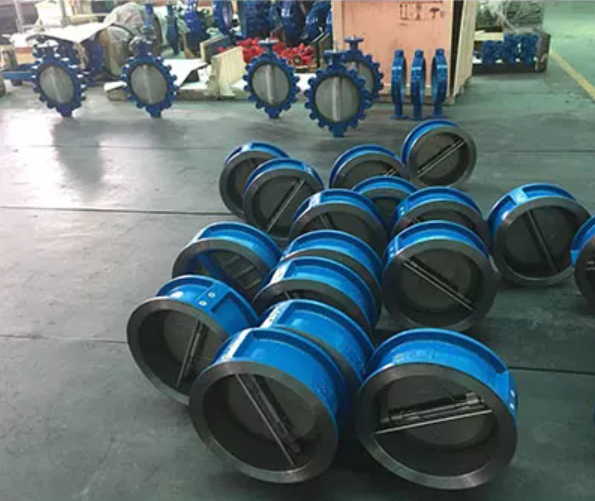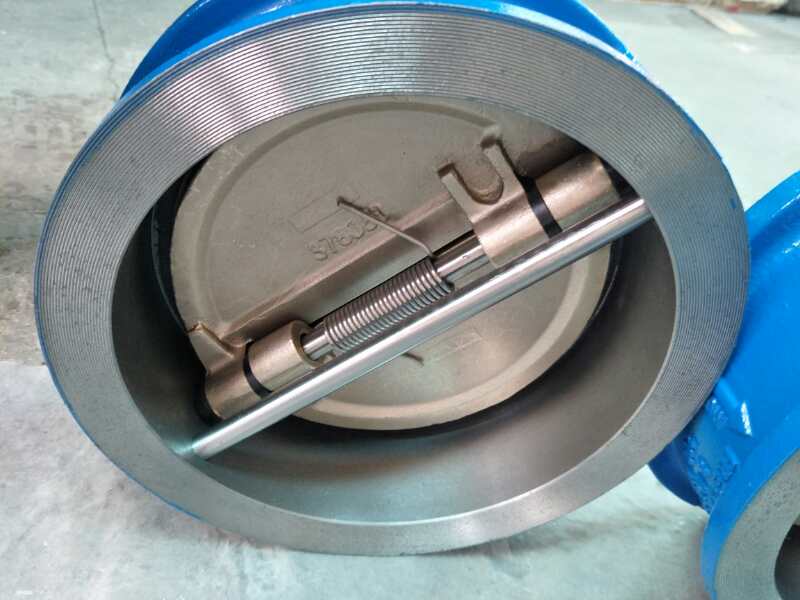Having trouble with your car's braking performance? A faulty brake booster check valve might be the cause. The brake booster plays a crucial role in amplifying your braking power, but without a properly functioning check valve, your brakes may not work as expected.
In this post, brought to you by IDEAL-VALVE Co., Ltd., a trusted name in precision valve manufacturing, we’ll discuss how to check your brake booster check valve and why it’s essential for safe driving. You’ll learn the signs of a failing check valve and the steps to inspect and replace it if necessary—ensuring your vehicle remains safe and responsive on the road.
What is a Brake Booster Check Valve?
Definition and Function
A brake booster check valve is a small but crucial component in your car's braking system. It ensures that the brake booster maintains proper vacuum pressure. The valve allows air to flow in only one direction, preventing the vacuum from being lost when the engine is off. Without it, your braking power could be compromised, especially in an emergency.
Importance of the Brake Booster Check Valve in Vehicle Safety
This check valve is essential for maintaining consistent brake performance. When functioning properly, it helps amplify the force you apply on the brake pedal. If the valve fails, you might experience a hard brake pedal, making it much harder to stop your car. This can be dangerous, particularly in critical driving situations where quick stops are needed.
Where Is the Brake Booster Check Valve Located?
The brake booster check valve is typically located on the brake booster, which is mounted on the firewall of your car’s engine compartment. It is connected to a vacuum hose that links the engine's intake manifold to the brake booster. When inspecting, you’ll usually find it near the brake master cylinder, often on the driver's side of the engine bay.

Signs Your Brake Booster Check Valve May Be Failing
Difficult to Press Brake Pedal
If your brake pedal feels unusually hard or stiff, the check valve may be at fault. A faulty valve can prevent the brake booster from generating enough vacuum pressure. Without this pressure, the pedal becomes harder to press, making it difficult to stop the vehicle effectively.
Spongy Brakes
Another sign of a failing brake booster check valve is spongy brakes. This happens when air gets into the brake lines, affecting the hydraulic pressure. The check valve, which normally maintains the vacuum, helps prevent this. When it malfunctions, air enters the system, and the brakes feel soft or less responsive.
Brakes Not Working Properly
In the worst-case scenario, a completely failed check valve can make your brakes almost useless. If the valve is damaged, the brake booster can't work as it should. This can lead to a complete loss of braking power, especially in emergency situations where you need quick and effective stops.
Warning Signs of a Vacuum Leak
A vacuum leak often accompanies a faulty check valve. You might hear a hissing or whooshing sound when pressing the brake pedal. This noise indicates that air is leaking from the vacuum system, preventing the brake booster from maintaining its necessary pressure. A vacuum leak can also cause inconsistent braking performance.
How to Check the Brake Booster Check Valve: A Step-by-Step Guide
Step | Description |
Prepare Tools | Gather screwdrivers, pliers, and a vacuum gauge (optional). Ensure the correct vacuum hose size. |
Locate the Valve | Find the valve near the brake master cylinder, attached to the brake booster. |
Inspect the Valve | Check for cracks, wear, loose connections, and ensure the hose is intact. |
Test the Valve | Vacuum Test: Check the vacuum gauge. Manual Test: Blow air through the valve. Whooshing Test: Listen for a whooshing sound when disconnecting the hose. |
1. Prepare Tools and Equipment
Before starting, gather the necessary tools. You will need basic hand tools like screwdrivers and pliers. A vacuum gauge is optional but helpful for testing the check valve's functionality. Ensure you have the correct size vacuum hose as well, as using the wrong size can cause issues during testing.
2. Locate the Brake Booster Check Valve
First, find the brake booster check valve. It’s usually attached to the brake booster in the engine compartment, typically near the brake master cylinder. The check valve looks like a small rubber or plastic component connected to a vacuum hose. The hose runs from the intake manifold to the brake booster. Make sure you’re working in the correct area for an accurate inspection.
3. Visually Inspect the Valve
Look for any signs of damage on the check valve. Check for cracks, wear, or loose connections. Ensure the valve is securely attached to the brake booster and that the hose isn't disconnected or damaged. A damaged valve could cause a vacuum leak and impact brake performance.
4. Test the Check Valve's Functionality
Vacuum Test:To test the valve’s functionality, connect a vacuum gauge. Apply vacuum to the valve and observe the gauge. The valve should maintain the vacuum, and the gauge should hold steady. A significant drop in pressure indicates a faulty valve.
Manual Check:Alternatively, try a simple manual test. Blow air through the valve in the direction it should allow. You should feel airflow. Now, try blowing air in the opposite direction. If air flows, the valve is defective and needs to be replaced.
Whooshing Sound Test :For the final test, disconnect the hose from the brake booster. Listen closely for a whooshing sound as the vacuum is released. If you hear this sound, the check valve is functioning properly. If not, it may be failing and require replacement.
Common Problems with Brake Booster Check Valves and How to Fix Them
Cracked or Leaking Check Valve
A cracked or leaking check valve can significantly affect your braking system. When the valve is damaged, it loses its ability to maintain the vacuum pressure needed for the brake booster to function. This can lead to a hard brake pedal, making it difficult to stop the car. To fix it, you'll need to replace the valve entirely. Look for visible cracks or signs of wear during a visual inspection.
Worn-out Valve
As time passes, the check valve can wear out. This often results in a gradual loss of braking efficiency. Symptoms include a decrease in braking power or inconsistent pedal feel. Replacing a worn-out check valve is the best solution. The process is simple: disconnect the hose, remove the faulty valve, and install a new one. Make sure to securely attach it to avoid future issues.
Broken Hose Connection
A broken hose leading to the check valve can also cause braking problems. If the hose becomes cracked or disconnected, the vacuum pressure will escape, leading to a lack of braking assistance. To repair a broken hose, first, inspect the hose for any visible damage. If you find a crack, replace the entire hose with a new one of the same size and material to restore proper vacuum pressure.
Damaged Diaphragm
The diaphragm in the brake booster can also be affected by a faulty check valve. If the check valve isn't functioning correctly, it can lead to pressure fluctuations that damage the diaphragm. Symptoms of a damaged diaphragm include a loss of braking power and difficulty pressing the brake pedal. If the diaphragm is compromised, the brake booster may need to be replaced entirely to ensure safe braking performance.

When to Replace Your Brake Booster Check Valve
Signs You Need to Replace the Brake Booster Check Valve
There are several red flags indicating your brake booster check valve may be beyond repair. If you notice a hard brake pedal, spongy brakes, or your brakes fail to engage properly, it's time to check the valve. A hissing sound while pressing the brake pedal or air escaping from the valve also points to a malfunction. If these symptoms persist even after testing the valve, replacement is necessary.
Choosing a Replacement Brake Booster Check Valve
When selecting a new brake booster check valve, make sure it matches the specifications of your vehicle. Consider factors such as size, material compatibility, and whether it suits your car's make and model. It’s important to choose a high-quality valve to ensure long-lasting performance and avoid further issues.
How to Install a New Brake Booster Check Valve
| Step | Description |
1 | Disconnect the Battery | Disconnect the battery for safety. |
2 | Locate the Valve | Find the old check valve connected to the brake booster. |
3 | Remove the Old Valve | Loosen the hose clamp, disconnect the hose, and remove the valve. |
4 | Install the New Valve | Place the new valve and tighten the hose clamp. |
5 | Reconnect the Battery | Reconnect the battery after installation. |
6 | Test the Brakes | Start the engine and check if the brakes work properly. |
Conclusion
In this article, we covered how to check your brake booster check valve. First, gather your tools, locate the valve, and perform a visual and functional test.
The brake booster check valve is crucial for vehicle safety. It helps ensure your brakes function properly, especially in emergencies.
If you notice any issues, check the valve or consult a mechanic. Regular checks can prevent braking problems and keep you safe on the road.
FAQ
Q: What Happens If the Brake Booster Check Valve Fails?
A: If the brake booster check valve fails, the brake pedal becomes harder to press, and braking power is reduced. This can result in poor braking performance and increased stopping distance.
Q: How Can I Tell If the Brake Booster Is the Problem, Not the Check Valve?
A: If the brake booster itself is the issue, you may notice difficulty pressing the brake pedal or inconsistent braking. A malfunctioning check valve, however, causes the pedal to feel stiff and may produce vacuum leaks.
Q: Can I Drive My Car Without a Functional Brake Booster Check Valve?
A: It's unsafe to drive without a functional check valve, as it compromises your braking power, making it difficult to stop the vehicle.
Q: What Are the Symptoms of a Malfunctioning Brake Booster Check Valve?
A: Symptoms include a hard brake pedal, spongy brakes, unusual sounds like hissing, and inconsistent braking performance.





